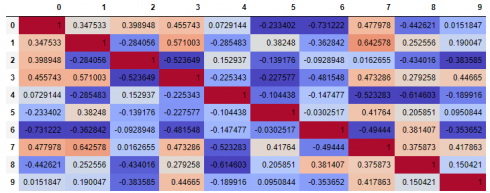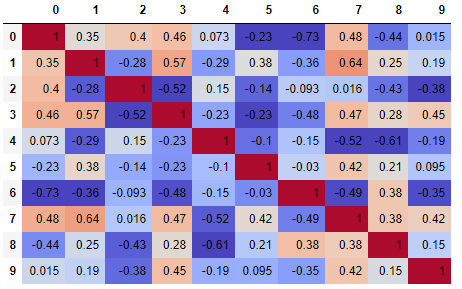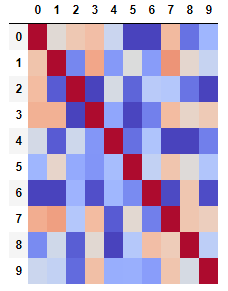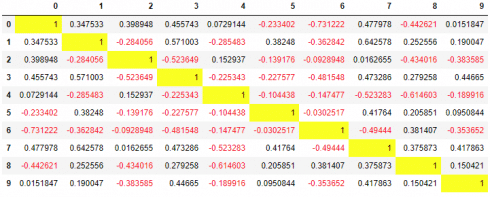When working with data it is helpful to build a correlation matrix to describe data and the associations between variables. In this article, you learn how to use visualizations for correlation matrices in Python. First we need to read the packages into the Python library: First let us make a correlation matrix table: The above table is quite hard to read and you end up with a lot of correlation numbers that is hard to interpret. Let us make them into a correlation matrix visualization: The above coding gives us the following correlation matrix visualization: It is possible to limit the digits with the following code: The above coding gives us the following correlation matrix visualization: It is also possible not to display digits: The above coding gives us the following correlation matrix visualization: It is also possible to use another colormap: The above coding gives us the following correlation matrix visualization: And also to highlight numbers: The above coding gives us the following correlation matrix visualization: It is also possible to highlight large numbers and color negative number red with the following code:本帖隐藏的内容
Visualizations for correlation matrix









 雷达卡
雷达卡



















 京公网安备 11010802022788号
京公网安备 11010802022788号







